
5 WAYS TO BRAINSTORM CONTENT IDEAS WITH SEO IN MIND
Struggling with writer’s block? Don’t worry, it happens to even the best content creators. But when you’re experiencing a creative slowdown, it can feel impossible to come up with a content idea that will help your website skyrocket to top-ranking positions. Thankfully, are some creative strategies you can use to brainstorm new blog ideas for SEO and make sure you’re writing the right content for search visibility.
Content is fundamental to SEO success. How can your site rank in search results without content? High-quality content can not only increase your site’s ability to rank for new queries in search results, but it can also increase links from other domains and expose your brand to new audiences. Therefore, strategically choosing content topics can go a long way for any content marketing strategy.
If you’re creating content on a regular basis, these five ideas will help you brainstorm new blog ideas for SEO and help you create great articles that can result in views, reads, and conversions.
1. Do Keyword Research
Keyword research tools are an excellent way to make sure you’re focusing your ideation on the right keywords while brainstorming new content topics.
Start with the question, “What is my audience searching for?” After brainstorming what a user might search, enter those terms into keyword research tools to discover new opportunities or help prioritize your initial list.
Some widely used keyword research tools include Google AdWords Keyword Planner, Google Trends, SEMrush and Moz Keyword Explorer. Create a list of three to five targeted keywords max to focus on for a specific article, all surrounding a central theme (one main keyword topic and supporting phrases).
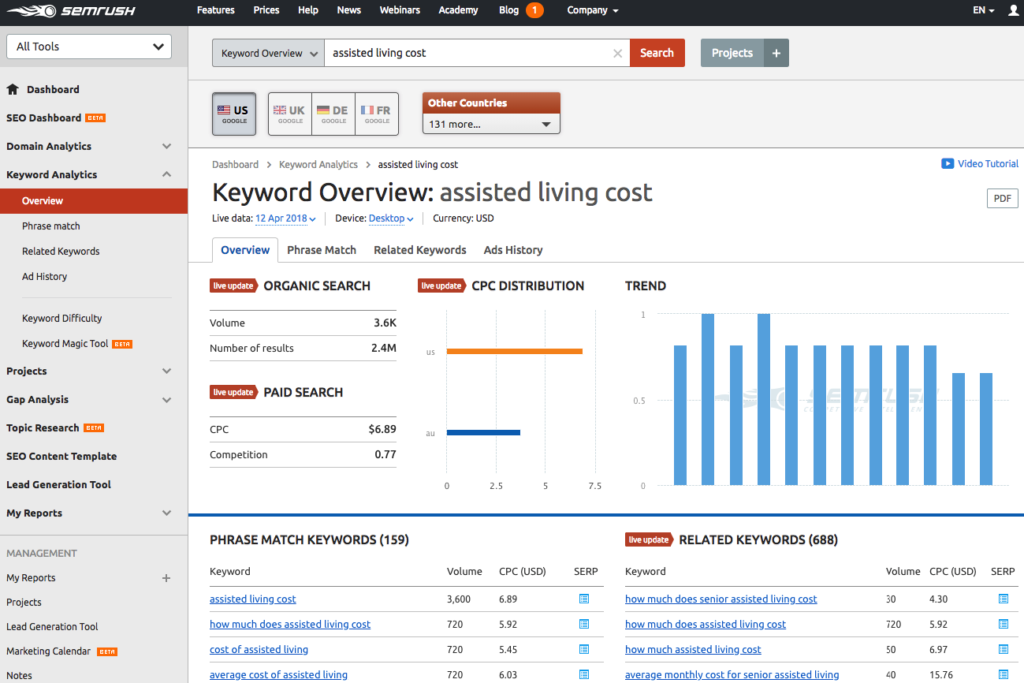 Source: semrush.com
Source: semrush.com
For example, you might choose “assisted living” as the keyword you are focusing on for a page. Then, add related keyword variations such as “what is assisted living” or “assisted living cost” into the article. Make sure these query variations occur naturally and make sense for the page!
2. Google Your Topics
Once you have an identified topic that you want to write about, discover article topics through Google’s related searches.
For example, let’s say you want to write about “assisted living cost.” By searching for this topic, you can see that the majority of posts are about how much assisted living costs and financial options for paying for it.
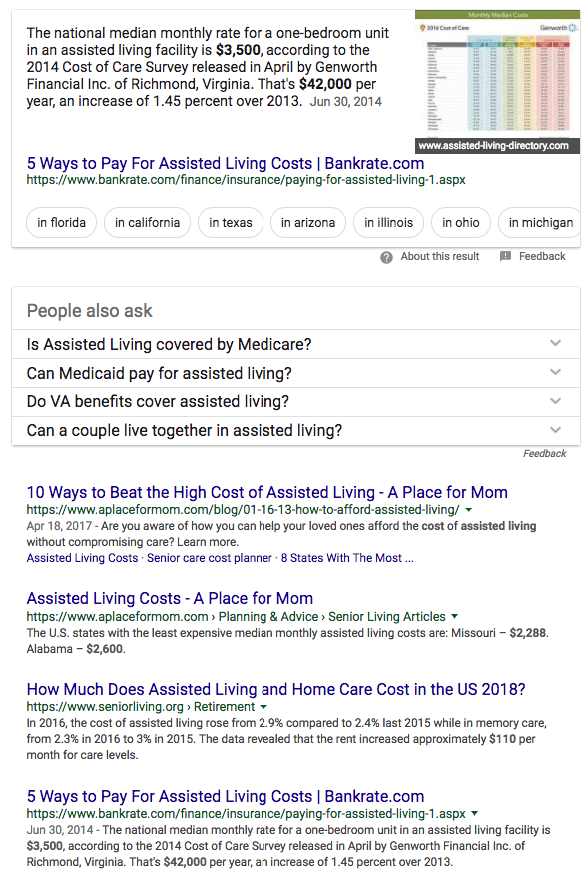 Source: google.com
Source: google.com
Additionally, looking at the related searches section will help uncover new topics related to “assisted living cost.”
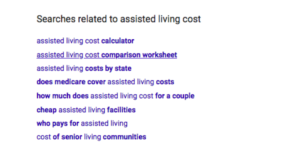 Source: google.com
Source: google.com
Take some of these topics and input the phrases into keyword research tools to prioritize topics for content creation and discover new, useful topics. Log these new content ideas for future use or add them to your editorial calendar.
3. Use Popular Third-party Tools
A great tool for identifying popular topics is BuzzSumo. Enter your topic, and you’ll discover the most shared content and the top influencers within that topic, the type of content, and whether it was successful in driving backlinks.
 Source: buzzsumo.com
Source: buzzsumo.com
Another third-party tool you can use for ideation is Answer The Public, which generates a report of most frequently asked how, why, when, what, who and where questions about your topic. Each query is linked to its Google search results, which provides an opportunity for further research.
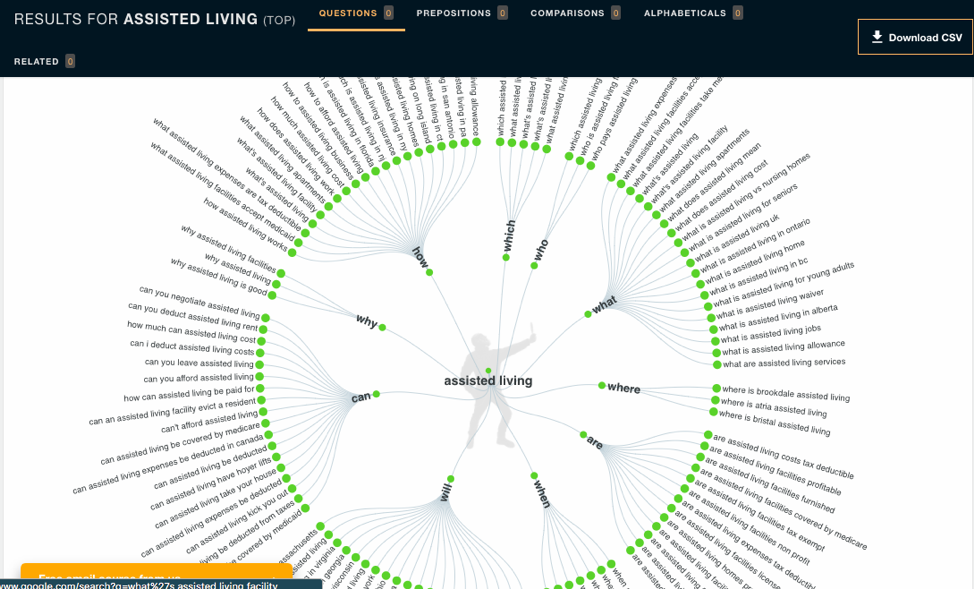 Source: answerthepublic.com
Source: answerthepublic.com
4. Research Your Competition
Understanding what content your competition is creating is helpful to identify content gaps for your site.
Create a list of competitors and regularly check their blogs and social accounts to see what they’ve been posting. Additionally, you can use the third-party tools (such as SEMrush or MozPro) to identify content your competitors are creating and the terms they are ranking for.
Ahrefs’ content gap analysis is a powerful tool for content opportunity research by showing competitive gaps and the most popular recent content on a topic. You can also research top-linked and shared pages of competitors to spot content and backlink opportunities.
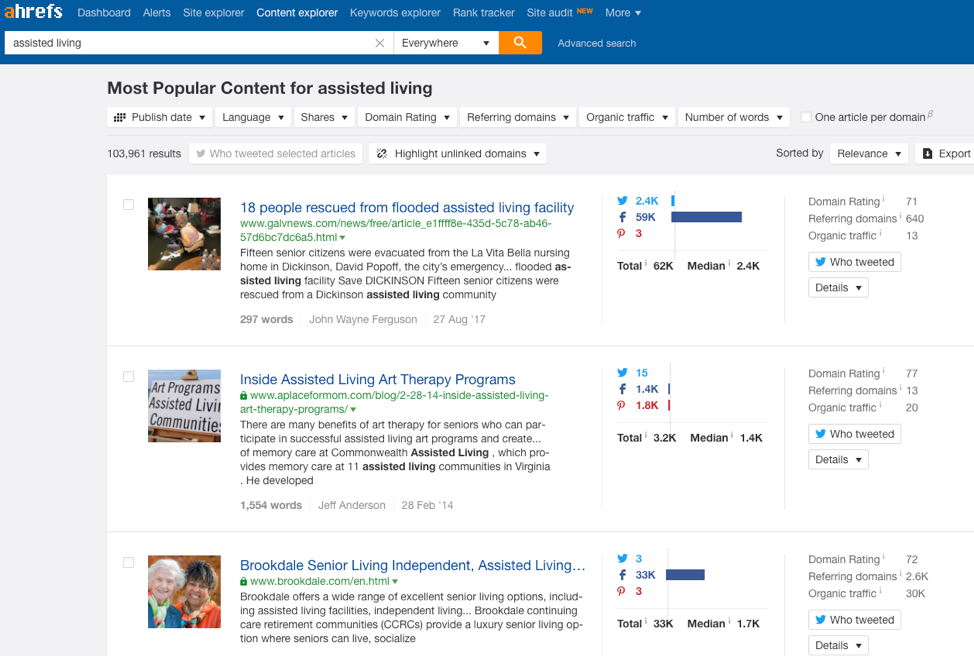 Source: Ahrefs
Source: Ahrefs
Reviewing the top-ranking content for a term you’re targeting will help prioritize certain content mediums (such as video or infographics) or content length. If all the ranking competitors have content that’s more than 1,000 words, then you should consider a more in-depth article versus a light blog post.
5. Review Forums on Your Topic
Reviewing forums on your topic or within your field will provide valuable inspiration to your content creation process. Wade through the topics and see what’s new. Is there a post you can create a piece about that’s relevant to your business? Don’t forget to skim through comments for additional viewpoints.
Conclusion
Regularly writing new SEO-friendly content or updating existing content can help show that your site is “fresh” in the eyes of search engines and users. Fresh content will also encourage more frequent crawling of your site and content, which makes thinking of creative blog ideas day after day intimidating.
But it doesn’t have to be. To find your next great article idea, start with the following steps we outlined in the article above:
- Do keyword research using tools such as SEMrush, Google Keyword Planner, Google Trends and Moz Keyword Explorer.
- Google your topics and look at the related searches and what topics rank well.
- Use popular third-party tools for ideation, such as BuzzSumo and Answer the Public.
- Review your competitors to see what content is shared, linked and driving traffic.
- Review forums on your topic or within your field.
Now that you have lots of new blog ideas for SEO, create an editorial calendar that prioritizes your new content topics (including your keyword and competitive research notes) to help keep you on track and ensure your SEO research is properly integrated within new content.
Found something helpful in this article? Please let me know and leave a comment below!
Kristan is an independent consultant with 15 years of experience in the SEO industry. Kristan previously founded the award-winning SEO agency Conifr. She’s worked in agency and in-house SEO leadership positions, most notably as the SEO Director at Zillow Group, overseeing a channel that received over one billion web visitors a year. Kristan is a freelance SEO consultant who built and sold a seven-figure agency and now enjoys helping others develop their freelance business.







